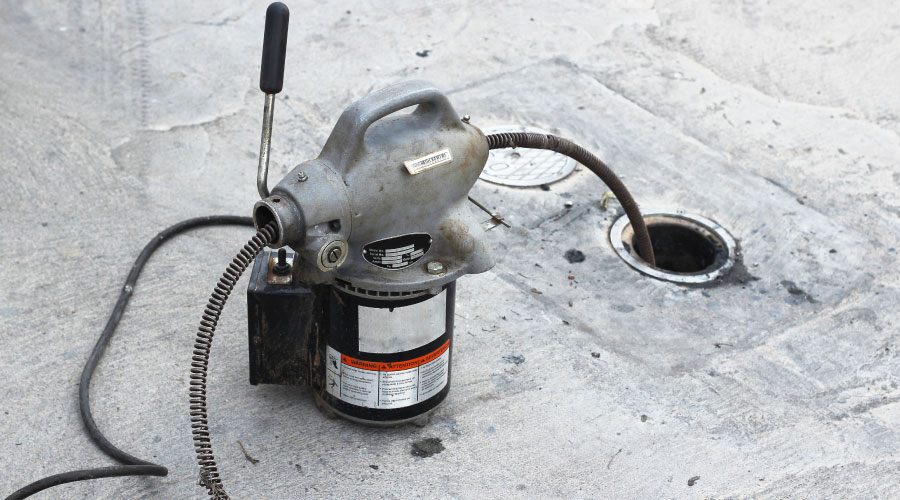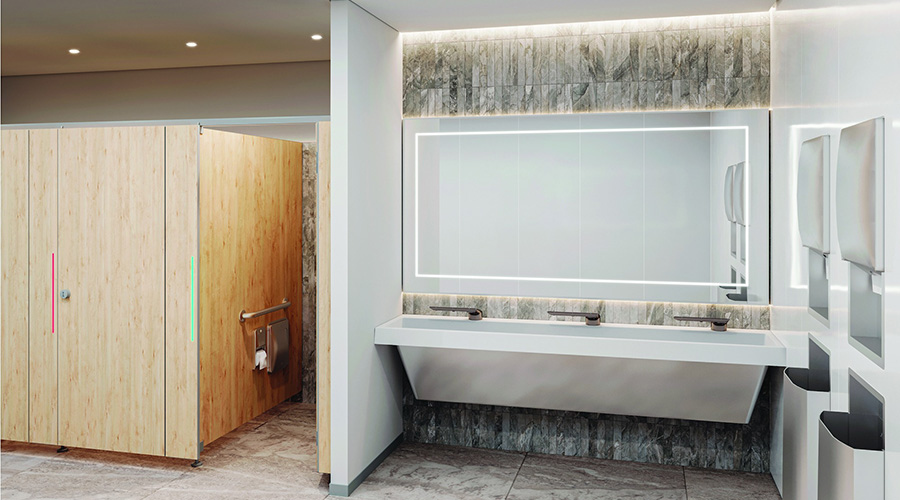Drain Cleaning: Devising a Strategy for Success
Piping systems in institutional and commercial facilities regularly present front-line technicians with problems related to keeping the systems free of blockages and ensuring the safety and hygiene of occupants. Maintenance and engineering managers can prevent blockages and the resulting costs by developing a drain cleaning program that spotlights known trouble spots in piping systems, helps technicians use the most appropriate equipment to address the problem, and uses preventive and diagnostic measures to prevent further problems.
Looking For Trouble
Two of the most common drain problems are blockages in sink and toilet traps. Their curved shapes tend to settle out solids, and the location of the traps near the surface stops the blockage close to the point of entry, which makes clearing the blockage easier and requires less complicated and expensive equipment. A manual snake often will be all a technician needs to solve the problem. Also if jewelry, toys, and other valuables accidentally find their way into the drain, technicians can retrieve them more easily by cleaning in place or disconnecting the trap rather than cleaning or disassembling an entire pipe run.
Areas in the drain system most likely to cause blockages fall into in three categories: lower rather than higher, smaller rather than larger, and horizontal rather than vertical. The likelihood of a blockage being lower rather than higher is due to the accumulation effect. As solids move down through a drain run, they tend to accumulate on the pipe walls. Since more branches enter the run as it descends, more total load passes the lower sections than the upper sections of a riser. This effect causes buildup on the lower pipe walls more quickly than on the upper walls.
The buildup also is likely to occur where runs are smaller in diameter. Since a smaller diameter drain has less surface area to build up on, the buildup will increase faster where the run diameter narrows than where it is larger and has more surface area to accumulate solids on before it closes up the cross-section enough to cause a blockage.
Blockages also occur more frequently in horizontal drains than in vertical drains. In horizontal lines, the flow slows, reducing the scrubbing effect the solids produce and causing them to cling to the surface. Once the buildup starts, it presents a rougher surface to build on more quickly. On the other hand, solids flow through the vertical risers faster, and the scrubbing action is greater, keeping the surface smoother longer and preventing buildup.
In short, lower, smaller, and horizontal areas create a perfect storm where drain blockages are concerned. Many blockages occur in the horizontal section of a drain at the bottom of a vertical riser, where there is also a sudden change of direction and a slowing of the flow. This scenario is especially common where grease, soap and other similar materials are present in the solids, causing them to cling to pipe walls and trap more solids over time.
In tracing problems in underground drains outside a building's perimeter, it is important to know where the runs are located relative to large shrubs and trees. Roots are notorious for growing into pipe joints, and they can obstruct drain flow as they grow. Technicians also should pay attention to catch basins, which are designed to trap solids in the drain by settling them out and allowing the liquid waste to continue into the main sewer line. It is important to know the system layout in order to predict how often each basin needs cleaning and prevent unintended backups and overflows.
For example, if a building's roof downspouts drain into certain catch basins, all the material washed off the roof by rain will end up in the catch basin. The solution is to know how long basins take to fill up and schedule a preventive maintenance cleanout often enough to keep them from overflowing. This cleanout time interval can vary greatly, but unless an exceptional situation exists — such as many trees overhanging the roof or large paved areas collecting a lot of debris and draining into one catch basin — once a year is often sufficient.
Related Topics:













